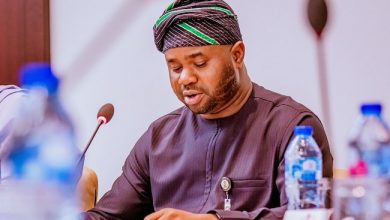How Zenith Bank Expands Profit From Slow Earnings

Brilliant earnings power and valuation multiples driven by strong fundamentals remain the secret of Zenith bank’s sustainable market leadership .
Zenith Bank, Nigeria’s biggest bank by profitability and the most valuable bank currently by market capitalization , had gross earnings slowing in the first quarter of 2021 . However it wrenched up bottom line with a deft application of management’s experience by leveraging interest expenses and non- interest income ; interest expenses were managed down as the bank’s stock of low-cost deposits increased, with interest paid on time deposits declining.
This feat remains a solid and strong factor driving its market value over years . Zenith Bank is currently the most valuable among its peers with market capitalization of N₦726.8b . This is a function of price and the number of outstanding shares . The bank has continued to create massive wealth through share price appreciation and stability . In terms of market share price return , the bank with a return of 39% exceeded its industry which returned 21.3% over the past year. . Asides this , its share price has remained stable in the past one year . ; it is not significantly more volatile than the rest of stocks over the past 3 months, typically moving +/- 4% a week. Its weekly volatility (4%) has been stable over the past one year
Not only that , it has continued to do the same via returns on dividend . Over the past one year, its dividend return was 58.8% against share price return of 39.0% compared to the industry dividend and share price returns of 32.7% and 21.3% respectively . However, while the bank over performed the market in terms of dividend return with 53.7% it under performed it at 44.9% in share price return .When its dividend returns are viewed over three and five years , Zenith Bank over performed both the industry and the market with its dividend returns with its 34.5%-and 170.9% records respectively compared with the industry and market average dividend returns of 8.1% and 7.6%- in the past three years and 70.7% and 27.6% in the past five years – respectively
The above benefits to investors are delivered by its strong earnings power ,. Over the past 5 years , its historical annual earnings growth stood at 14.4% just as its current net profit margins at 44.9% are higher than last year 43.3%)
However its earnings growth over the past year of 11.4% is below its 5-year average at 14.4% per year . But its earnings growth over the past year of 11.4% exceeded the industry average of 1.6%. .
. Its strong fundamentals consequently delivered sterling valuation multiples that are behind the bank’s market and industry leadership . . Zenith Bank is considered a good value by analysts based on its PE Ratio 3.1x compared to the industry average 4x .and also a good value based on its PE Ratio (3.1x) compared to the market average of 7.9x . The bank is good value based on its PEG Ratio at 0.3x as every multiple below one is considered good by analysts
At its PB Ratio of 0.7x compared to the industry average 0.4x , it follows the industry trend selling at discount to its book value . . However ,while its Return on Equity at 21.35% is high, this metric is skewed due to their high level of debt
: With its reasonably low payout ratio at 40.4% ZENITHBANK’s dividend payments are well covered by earnings. ZENITHBANK’s dividend yield at 12.96% is higher than the bottom 25% of dividend payers in the market at 3.78% ; its dividend at 12.96% is in the top 25% of dividend payers in the NG market (7.86%) ; its dividend payments have increased over the past 10 years.
The above sterling performance at the market level is an outcome of its brilliant fundamentals which its first quarter performance in 2021 also confirmed . By hauling up net interest income marginally by 2% to N83,168 in 2021 from N81,501 , Zenith Bank showed that it’s not what you get but what you make out of it that matters. Revenue had had a slip by -6% from N166.8 billion in Q1 2020 to N157.3 billion in Q1 2021. The decline in the top line was due to the prevailing low yield environment that was prevalent within the quarter which affected the yields on marketable securities and the pricing of risk assets; this led to a reduction in interest income from N114. 3 billion to N101.2 billion. , a potential spoiler.
But after suppressing interest expenses seismically by 45% to N18,008 from N 32,829 gave the net interest income a positive outlook ; net interest income is a guide to how well a bank manages the interest rates it pays for borrowing and lending . The low yield environment however accelerated the downward re-pricing of interest bearing assets which in turn led to a 22% compression in net interest margin (NIM), decreasing it from 7.7% to 6.0% in the current period
But Non-interest income rescued the bank from the potential spoiler . Non-interest income grew to 51,201 from 46,639 , a 10% increase . It was boosted by the increases in fees and commission income which resulted from increased volume of transactions across all its channels ; this was as a result of growth recorded in credit related fees and fees on electronic products
The first quarter result is the beginning of another attempt to wring good profit as was done in the last financial year, in its attempt to reaffirm leadership of the sector The bank achieved a slight reduction in impairment charges; ; these charges improved marginally by -2.43% in Q1 2021 to N3.86bn from N3.95bn in Q1 2020 ,re-affirming the bank’s enhanced asset quality. In the same breadth, coverage ratio increased by 2% to 114.0% from 112.1% 2% over the same period, an indication of prudent disposition consistent with the bank’s known record of excellent credit risk management .
Operating expenses rose but were restricted to N69,492 from N65,401 an increase of 6%
. Moreover ,as a result of the inclement operating environment , the bank’s cost-to-income ratio increased marginally by 1% to 53.2% from 52.7%
Despite these forces , its Pre-tax profit of the leading bank, buoyed by 4% to 61,022 from 58,788 4% .This helped to shoot up pre-tax profit margin to 38.8 percent, up from 37.5 percent. with that rise in pre-tax profit, the bank’s net profit flew by 5 percent to N53,060 from N50,526 , leading to a rise in net profit margin to 33.7 percent from 30.3 percent.
To cement its place as the most profitable bank, return on Average equity , ROAE , stood at (ROAE) 19.2% and return on assets (ROA), stayed at 2.5 % Also, the bank’s robust risk management framework ensured that the cost of risk reduced marginally from 0.6% in March 2020 to 0.5% in March 2021
Cost of risk dropped which is a testament to prudent risk management, even as gross loans increased marginally by 2% from N2.92 trillion to N2.98 trillion in Q1 2021 The bank’s non-performing loans ratio also declined marginally by 2% to 4.20% from 4.29% This is still within the regulatory threshold and far below industry peers. The profitability was driven by optimisation of its cost of funds and improvement in non-interest income. Cost of funds reduced significantly from 2.6% in March 2020 to 1.1% in March 2021..
The bank’s balance sheet was robust as the loan to deposit ratio, liquidity ratio and capital adequacy ratios were 52.6% , 70.0% and 21.1% per cent respectively, all well above the regulatory threshold.
Its Assets to Equity ratio at 8x is low ,indication that it is using less debt for its operations . .
However the 75% of the bank’s liabilities are made up of primarily low risk sources of funding. ; its Loans to Assets ratio of 34% is considered to be appropriate just as its Loans to Deposits ratio of 53% .However, the bank’s bad loans at 6.1% is considered to be high bank and its allowance of 76% for bad loans is believed to be low
The bank’s total assets grew by 2 per cent, to 8,682,815 from 8,481,272 while shareholders’ fund declined marginally by 2 per cent to 1,091,826 from 1,117,473 Despite its slight decline , for such weighty shareholders’ fund, it is natural to pull in heft deposits But it was the bank’s ability to meet and surpass regulatory guidelines that was the highlight of the first quarter 2021 results.
. In 2018, costly deposits were foregone in favour of cheaper and more stable deposits resulting in a reduction of expensive and shorter dated deposits by N110 billion. This culminated in the reduction of cost of funds which declined by 40 per cent from 5.2 per cent in 2017 to 3.1 per cent for the year.
The bank deposits grew by 6% from N5.34 trillion in December 2020 toN5.68 trillion in March 2021 with the savings account balance, which is solely retail delivering a N54 billion increment providing it with a platform to rebalance its deposits mix Its robust customer acquisition strategy and the effectiveness of our electronic platforms and digital channels has enabled the bank to deliver whooping amount saving account increment . .The transactions on its electronic channels are also growing astoundingly as new customers continue to be attracted to its user-friendly digital platforms. The results were a testament of the bank’s efforts to deepen its roots in the retail segment. This has led, in the main, to a remarkable increase in the volume of transactions across various electronic platforms as well as significant customer acquisitions. This growth in transactions on the bank’s digital channels continues to support the bank’s retail push as fees from e-products continue to increase . The bank also stated that it would continue its investment in the retail end of the market to consolidate its leadership in both the corporate and retail segments
Going into 2021, the expectation is that the ongoing economic recovery and improvements in the yield environment will translate into improved numbers for the Group. This will be supported by local and international COVID-19 vaccination campaigns, rising commodity prices, and global economic growth of up to 6%, as estimated by the International Monetary Fund (IMF). The Group will continue to position itself to take advantage of these positive developments and deliver improved financial performance and returns to all its stakeholders.
The management has assured shareholders of the bank’s commitment of continuing to deliver superior returns in the years ahead. Zenith Bank remains a clear leader in the digital space, with several firsts in the deployment of innovative products, solutions and an assortment of alternative channels that ensure convenience, speed and safety of transactions. “To continue to cater to the varied appetites of our customers in a constantly changing world and stay ahead of the competition, therefore, we have invested massively in new technologies and innovative solutions in the last financial year. This is geared towards ensuring that we continue to provide best in class quality services that create value for all our stakeholders,” a top manager of the bank said, noting that Zenith Bank made significant progress in the adoption and integration of sustainable banking principles into its business, especially in its credit administration process.
Consistent with this excellent performance and in recognition of its track record of stellar performance, the bank was recently ranked as the Most Valuable Banking Brand in Nigeria in 2018 by The Banker Magazine. Similarly, Zenith Bank was recognised as the Best Corporate Governance Bank in Nigeria by The World Finance for the sixth time just as Ethical Boardroom, a Europe based Boardroom watchdog reaffirmed this recognition by naming Zenith Bank as the Best Bank in Corporate Governance in 2018. Recognition has also come the way of the bank as it was recently named the Best Institution in Sustainability Reporting in Africa 2018 (SERAS Awards) and the Bank of the Year 2018






